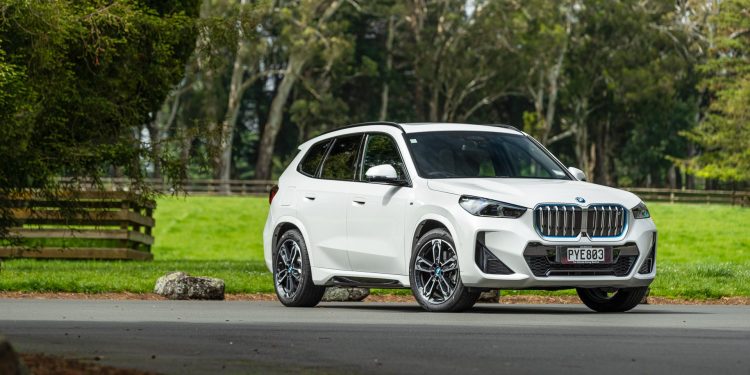2023 BMW iX1 xDrive30 review
Words: Peter Louisson | Photos: Isaac Western
BMW’s i cars slowed to a trickle for a time but now there are new electric examples in every sector. We drive its first electric X1.
We’ve mentioned it before but it bears repeating. The best EVs we drive are generally the more compact ones with moderately sized battery packs.
That’s not an invariable rule; there are some big electric bruisers that are pretty awesome but as a rule moderately sized EVs work better.
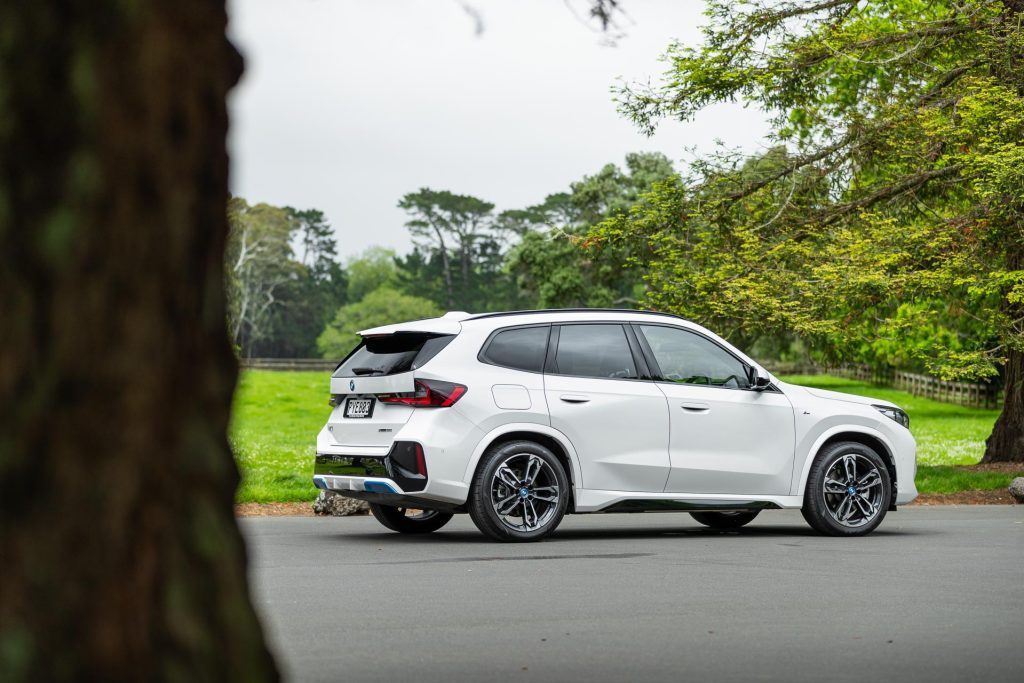
How come? It’s as much down to weight as anything, and by inference battery pack size. Something around the 65-70kWh can give quite reasonable range (400-odd km) and doesn’t take forever to recharge at home, even with just an emergency charger.
And the other aspect is that handling isn’t compromised because it is hard to get heavy vehicles, even those that are well balanced and well grounded, to handle neutrally.
Ideally we’d say under two tonnes is optimal but there are always exceptions to the rule, as with this vehicle you see here, the iX1 xDrive30.
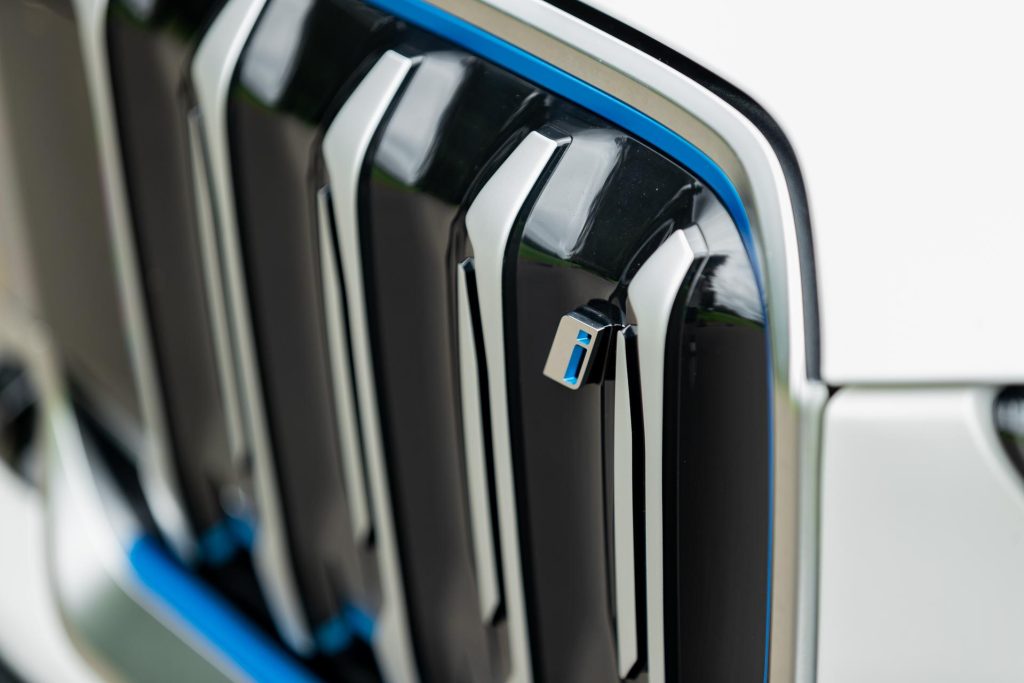
Now this isn’t the only model in the new third-generation X1 line-up.
The first was the petrol-fired X1 sDrive18i, with 115kW and costing $72,400. More recently BMW announced the addition of the iX1 eDrive20 with 150kW and 247Nm directed to the front wheels, a 65kWh battery pack and range of 430-475km.
It is said to hit 100 from zip in 8.6secs and might be here in time for Christmas if it’s a new sleigh you’re after. Cost is TBC.
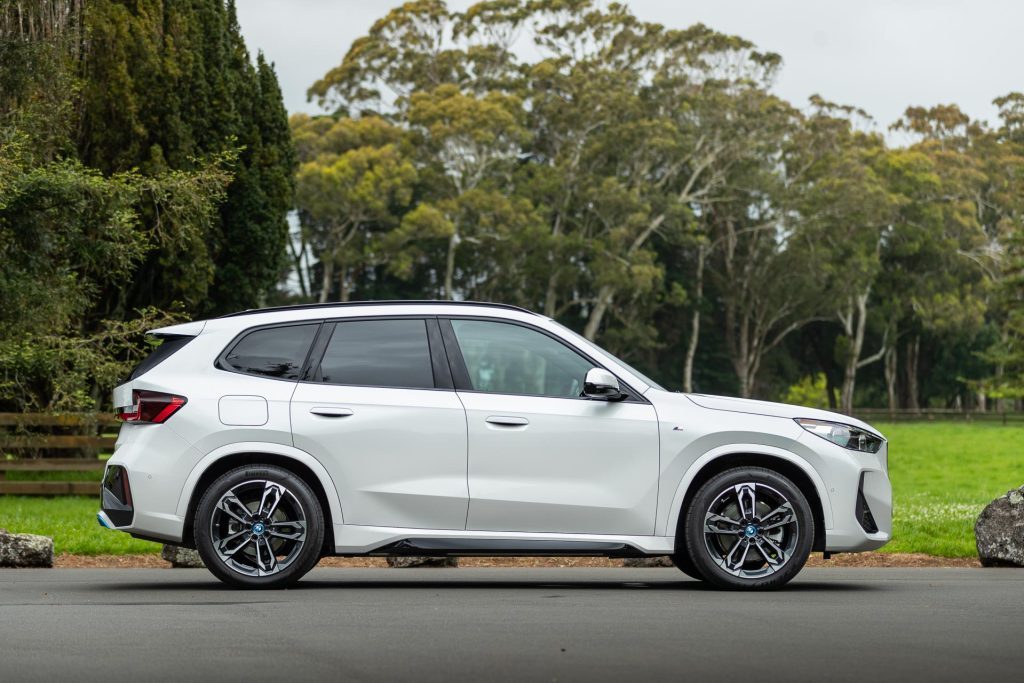
However, it is the iX1 xDrive30 that features here, the current range topper and clearly a dual-motor AWD unit because of the xDrive descriptor. It is the first electric X1 to arrive here, has a system total output of 230kW and 494Nm, and utilises the same 65kWh battery.
There is a kind of boost-to-pass system that offers enhanced peak system output for 10sec or so. Which is more than enough to pass a small line of cars if need be.
BMW reckons on a 0-100 time of 5.6sec so despite the vehicle weighing in at a quoted 2085kg, that’s quite brisk.
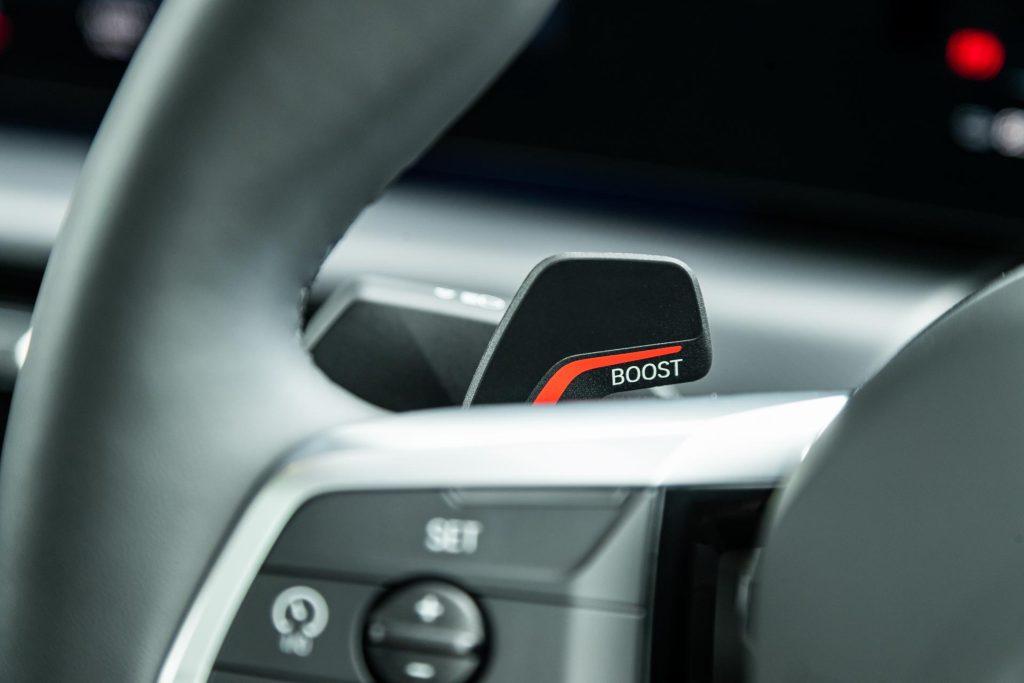
At pick up it was reading 403km when fully charged though BMW reckons on 440km of range (WLTP), likely with more town running.
Mean energy efficiency is 17kWh/100km while we saw consumption of 15s on the motorway, low 20s up the test hill.
After that outing we returned with about 60 per cent of range remaining and following an overnight stint on our 2kW charger it was back to 100 per cent.
The same thing in vehicles with battery packs over 100kWh takes a couple of days. That’s another reason we tend to favour moderate battery sizes.
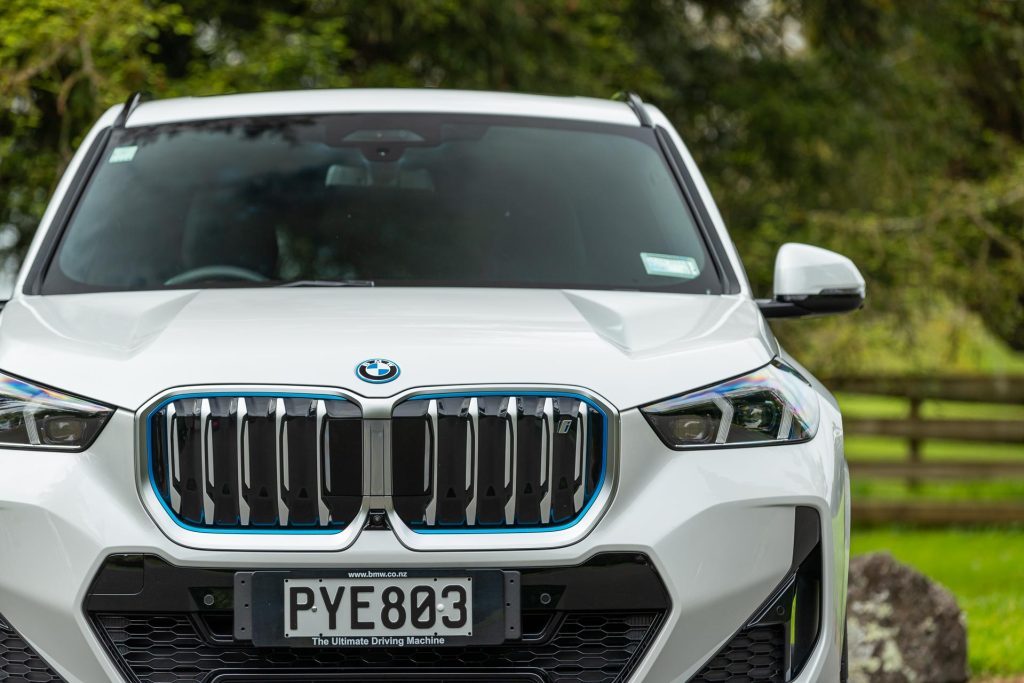
Even with battery packs this size you’d probably want to make the investment in a wall charger, providing you have a garage and a wall spare but it isn’t mandatory given the vehicle comes with an emergency charger (and a charging cable for public AC use).
It features 22kW onboard AC charging capability, a full charge taking around 3.45 hours. A 10-80 per cent recharge on a DC fast charger (up to 130kW) evidently takes 29min.
Big enough for some
For urban use the iX1 is a handy size, at 4.5m in length and 1865mm in width, so it’s easy enough to park which it will do by itself if you ask it nicely.
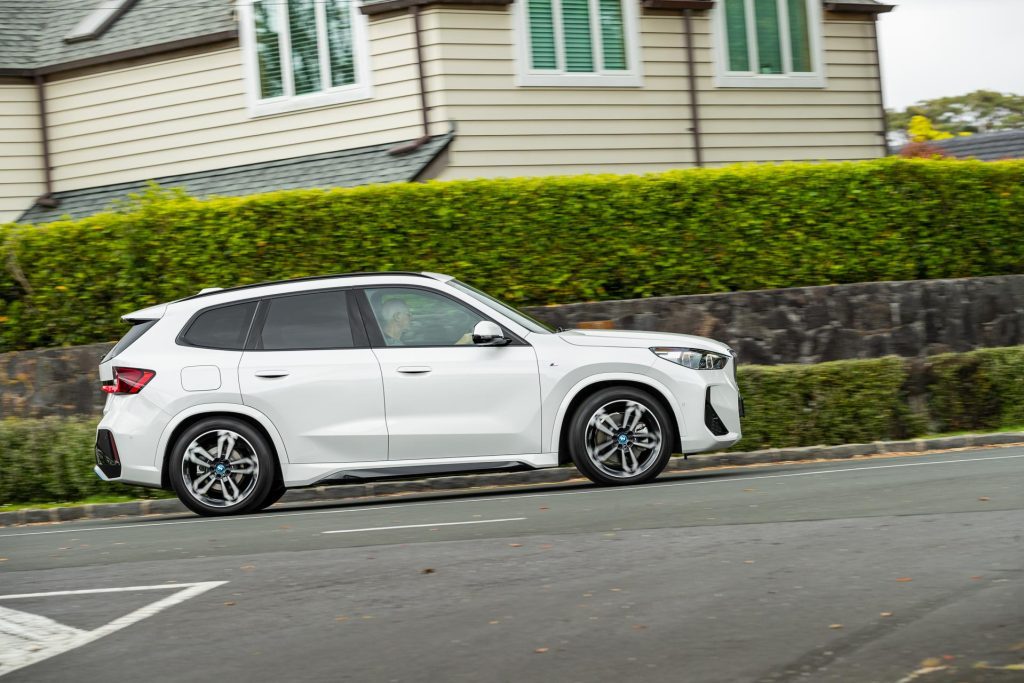
We sat in the back and it’s not as tight as you might think of the company’s smallest SUV, sorry, SAV, or sports activity vehicle. So long as the front seats aren’t set right back there’s enough room for two to three adults in the rear, despite the standard fit glass panoramic roof.
BMW says that behind the powered fifth door is a space that swallows 495L of gear, expanding out to 1495L if you’re heading off to Bunnings or Mitre10.
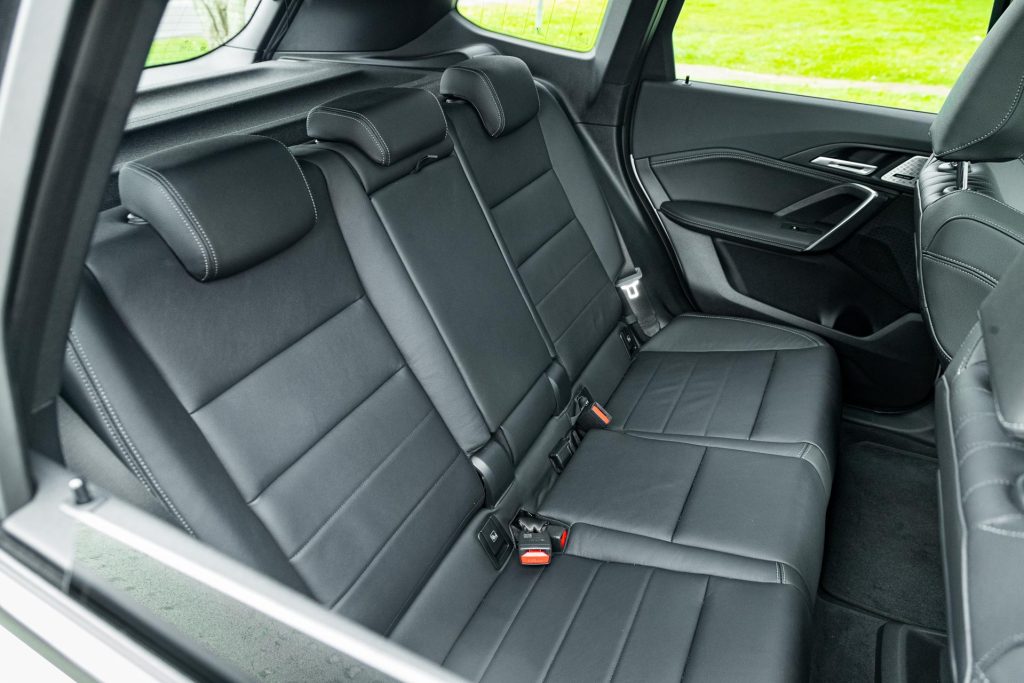
There’s storage beneath for cable clobber but no frunk, despite the obvious power bulge in the bonnet.
This vehicle though is rather more than just a practical urban workhorse. As is the BMW way at present, you select mood modes rather than drive modes, so Personal is Comfort, Sport is the go-hard mode, while Efficiency doesn’t really tally with any mood, other than to get you home without pushing.
We did a lot of town mooching in Efficiency mode just because it doesn’t suck the life out of the motors and it’s still brisk enough away from the lights.
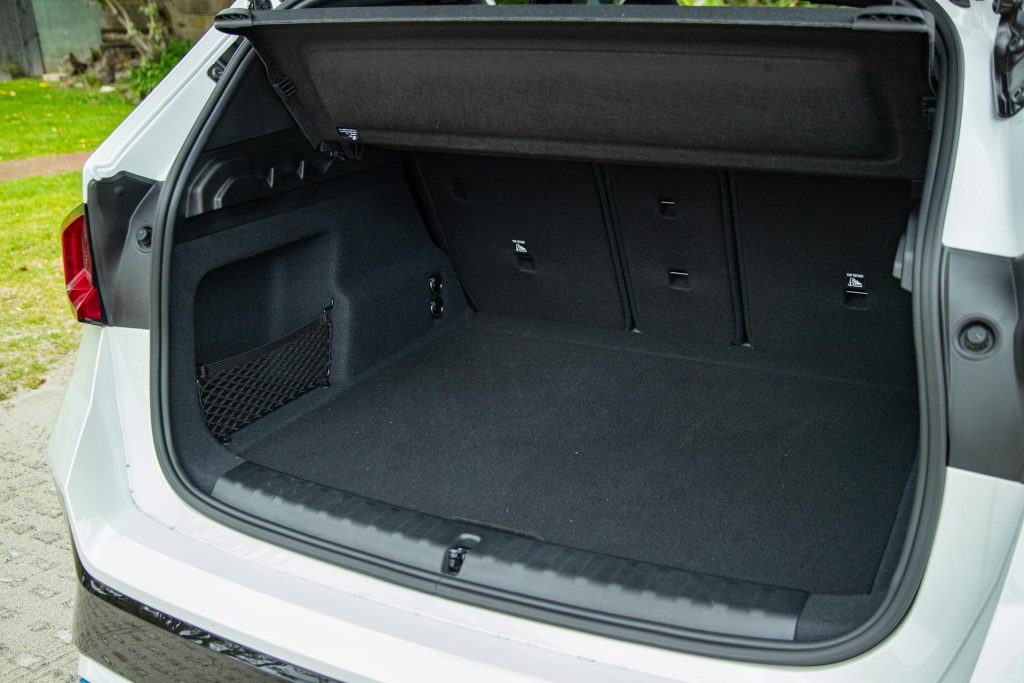
Slows and goes nicely
Regeneration is done a bit differently in the iX1. There are no paddles as such, though there is a single blade attached to the wheel which has Boost written upon it, for obvious reasons. But it’s nothing to do with regen.
If you delve around in the vehicle settings area of the infotainment screen, you’ll eventually find the area where regen is adjustable.
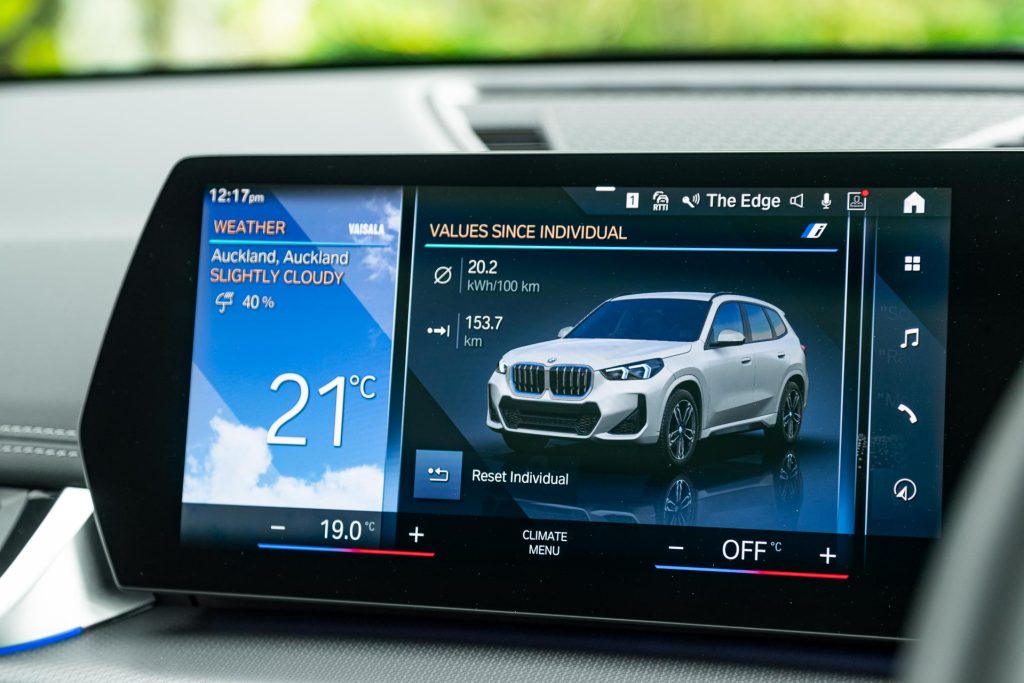
We’d suggest going for Adaptive regen rather than the other fixed settings (high, low or moderate) because it makes use of adaptive cruise hardware to determine the distance from the vehicle in front and to regen when possible once you lift off.
If there’s nothing in front, it will coast. Alternatively, you can opt for max regen by simply pulling on the shift lever, such as it is, to the B position (for battery regen). It’s not quite a single-pedal driving solution but it’s pretty close.
At the other extreme this is pretty good too, selecting Sport and checking out longitudinal acceleration. BMW reckons it gets to 100 in 5.6sec and it aced that.
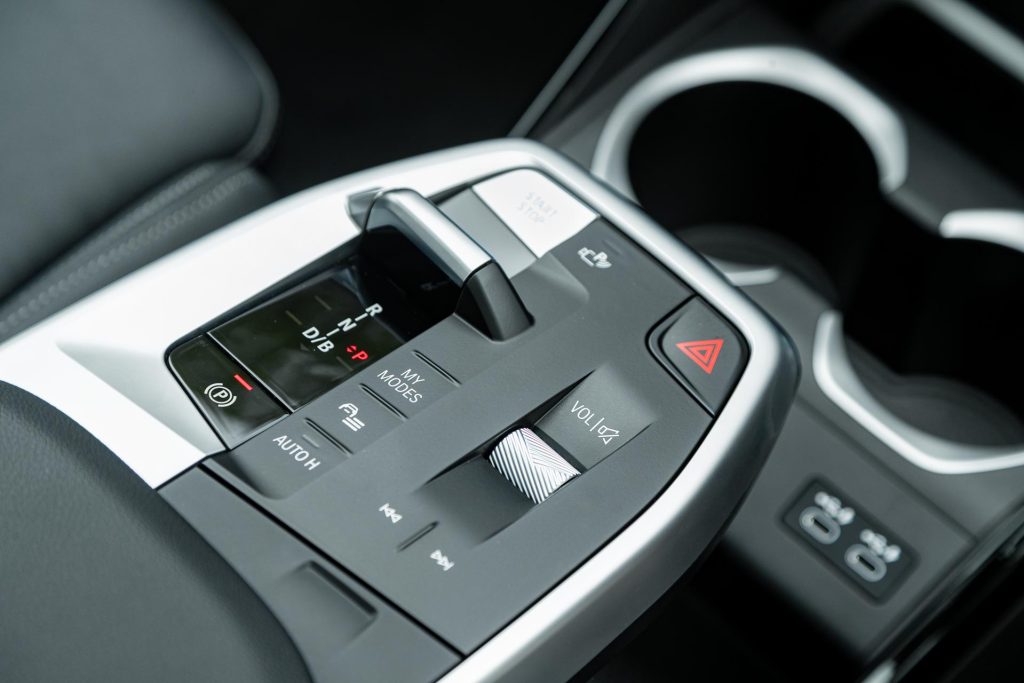
Think closer to 5sec flat. In Sport mode it makes a bit of an angry hornet noise too, but you can turn off the sonics if you want and listen to the HK system instead.
We tried the Boost paddle while in Comfort mode and it shoots you past cars in blazing fashion, taking around 3.4sec to run from 80 to 120, or just under 100m.
These performance figures easily best those of, say, the EQA 250 and also the more expensive EQA 350 while even the much more expensive AWD Q4 e-tron 50 can’t keep pace with this BMW.
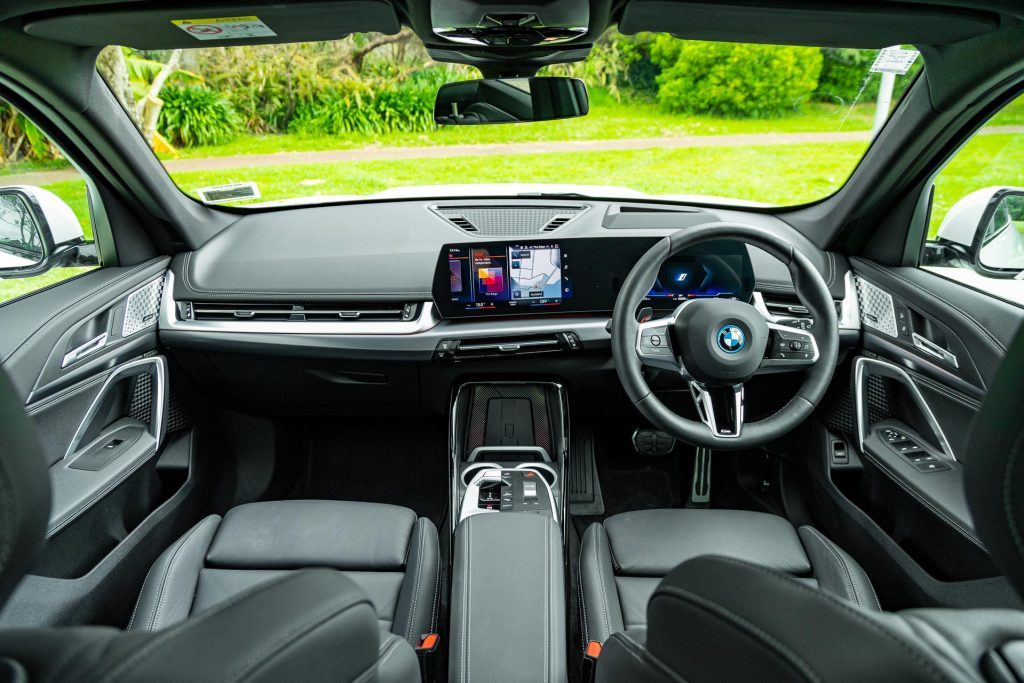
The base Q4 that costs the same as this won’t see which way the iX1 xDrive30 went. Only Tesla Model Y Performance gets one over the BMW, at a similar price.
Dynamics divine
This BMW is better set up on the ride and handling front than its rivals too. This features adaptive dampers and the ride quality is impressive, regardless of road surface beneath.
Moreover, it’s quiet riding as well, and that’s despite it wearing quality Pirelli PZero footwear; we recorded no cabin SPLs in the 70s.
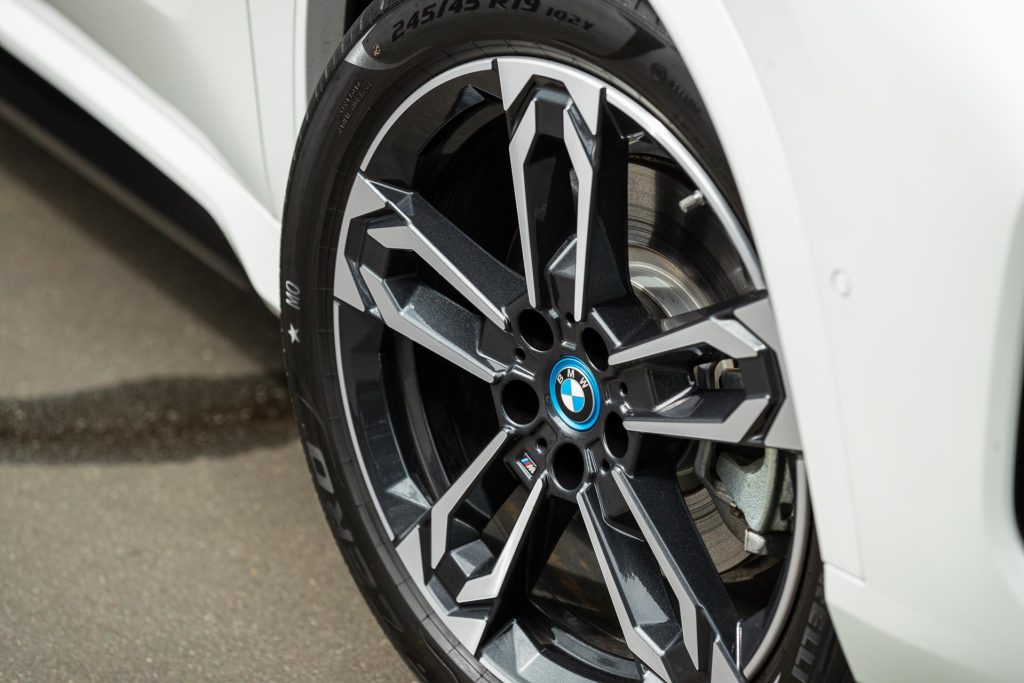
Taking to the hill roads and this hangs on grimly, the even front/rear weight balance helping and understeer not really part of its make-up unless you get a bit too enthused.
Notch things up to Sport and things are even more impressive in the bends, without the ride going out the back door. Jolly impressive really, to match its electrifying performance.
Quite the electric dual-motor package then, at under $100k and with more than a pinch of practicality as well.
Because of the gradual size increase across the generations, this is now about where X3 used to be originally.
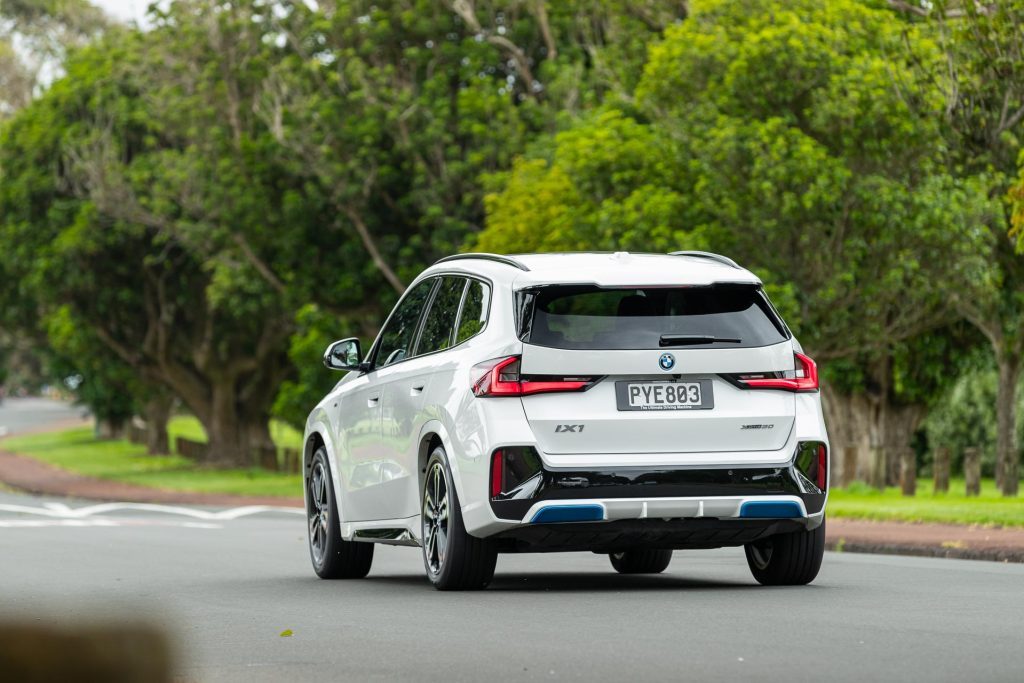
But the look is much better, with the squared off wheel arches and blue-tinged kidney grille, gloss black external highlights, mild body kit and sassy grey alloys.
Specced to the nines
Aside from items already mentioned, our tester featured synthetic leather upholstery for the powered sports seats that have a lumbar pump, heating and massaging function, nav with augmented reality, a too-thick sports steering wheel, wireless hook up for smartphones, Qi charging (in an upright cradle), adaptive LED headlights, auto locking and unlocking, and a head-up display with traffic sign recognition.
There’s the typical safety items, down to a surround view camera, and BMW’s clever reversing assistant (retraces the way in automatically). And for device charging there are four USB-C ports atop the Qi charger.
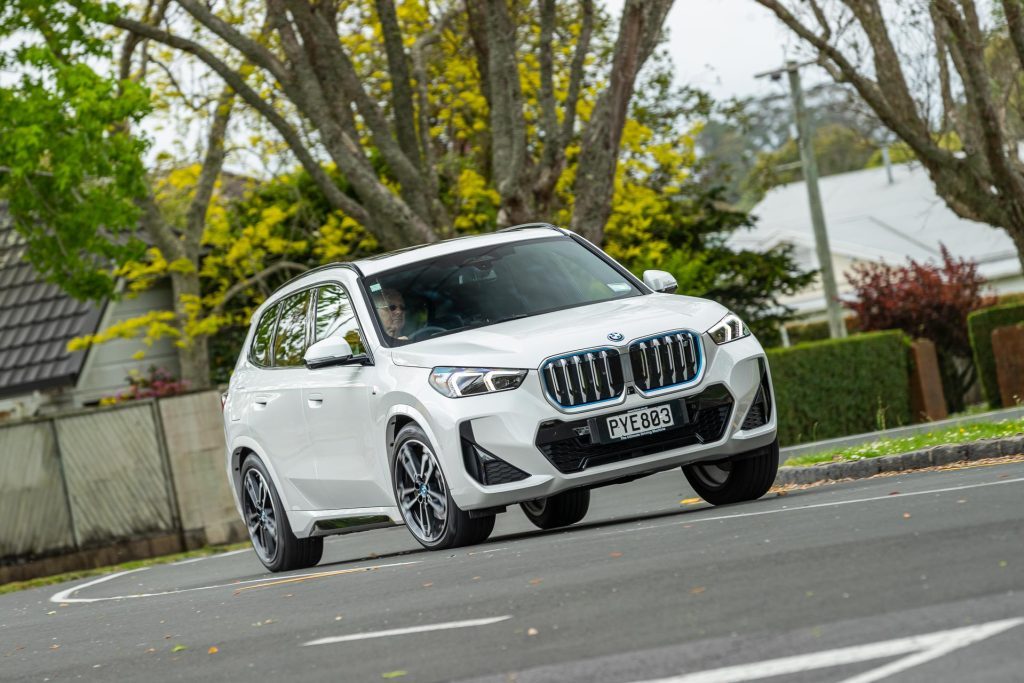
As you might have gathered, we rather liked this new electric X1 range topper. But if performance isn’t critical and you want a bit more range for an estimated $13k less, wait for the incoming iX1 eDrive20.
It promises even more range from the same battery pack, and features the same fast charge features as the xDrive30 variant.
| Model | BMW iX1 xDrive30 |
| Price | $98,900 |
| Clean Car Discount | Neutral – $0 |
| Motor | 230kW/494Nm |
| Battery | 64.8kWh net |
| Range | 418-433km |
| Drivetrain | single-speed auto, AWD |
| Energy Use | 17.8kWh/100km |
| C02 Output | 0g/km |
| 0-100km/h | 5.08sec |
| 80-120km/h | 3.37sec (96.38m) |
| 100-0km/h | 33.76m |
| Stability systems | ABS, ESP |
| Safety | AEB, ACC, BSM, LDW, RCTA, ALK, AHB |
| Luggage capacity | f-490-1495L |
| Tow rating | 750kg (1200kg braked) |
| Service intervals | 24 months, 32,000km |
| Warranty | 3yrs, unlimited km |
| ANCAP rating | 5 Stars (2022) |
| Weight | 2085kg (claimed) |
This story first appeared in the November 2023 issue of NZ Autocar magazine.


